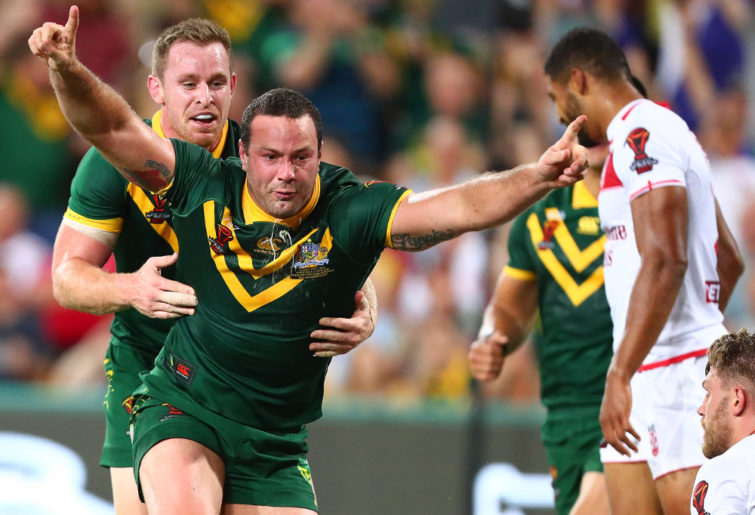NRL News: Richo knocks back Souths to ink long-term Tigers deal, kick-offs 'close to a change soon'
Shane Richardson has inked a four-year deal to lead the Wests Tigers, confirming himself in a permanent role after taking the CEO's job on…
It seems a long way down everyone’s list of priorities as April dawns, but rugby league’s first World Cup Nines is scheduled for October at Sydney’s new Bankwest Stadium.
And with the Great Britain tour bypassing Australia, it will be the only chance some fans get to see the big-name northern hemisphere players in action this year.
The event is important because it’s one of the few things – the 13-a-side World Cup being the other – from which the Rugby League International Federation can generate income which can then be funneled into developing the code in new areas.
The RLIF this week confirmed governance reforms that involve the appointment of two independent directors, by the way. They’re on the move.
The NRL are running the World Cup Nines on behalf of the RLIF and it is supported by the NSW government – who have won the rights to host in 2023 as well – and sponsored by infrastructure company Downer, who previously backed the Auckland Nines.
At the moment we don’t know which teams will complete; 12 men’s sides and four women’s sides will be invited.
And that’s what I want to talk about here: “will be invited”.
As recently as 2000, the 13-a-side World Cup had no qualifying process, but now there is an elaborate system – which gave us those great pictures from Jacksonville in November, when Jamaica qualified for the first time.
Norway and Greece meet in a qualifying play-off next month in London. Later in the year, the United States play the winner of a proposed South Africa-Cook Islands eliminator.
There are so many countries playing rugby league now that arbitrary invitations don’t really fly.
So how should qualifying work for the 2023 World Cup Nines in Sydney? This might sound a bit far in the future but organisationally it will have to start next year. Should there be separate world rankings for Nines, or are Australia, England and New Zealand permanent seeds who don’t have to qualify because they’ve always been good at the full version of the game?

Boyd Cordner of Australia celebrates a try during the 2017 Rugby League World Cup final. (Photo by Chris Hyde/Getty Images)
And herein lies the problem: if Australia, England and New Zealand were asked to play in qualifiers, they either wouldn’t or would send below-strength teams.
The Kiwis can’t even afford to send a Nines team to Commonwealth Games-affiliated events and the stink that would occur between the RLIF and clubs about releasing big-name players for a World Cup Nines qualifier doesn’t bear thinking about.
So the organisers had better hope the ‘Big Three’ perform well this year so they have an excuse to give them a rails run to the next one.
The dream, of course, is that we have a full-time Nines circuit with national teams, made of of dedicated squads like rugby sevens.
Talented youngsters and greats at the end of their careers could see the world with a season on the circuit, while the smaller nations would be able to field their top-strength sides.
But we’re $10 million – at least – away from making that happen.
The best strategy, therefore, would be to build up the many Nines tournaments that dot the globe.
Amateur tournaments, done right, can be a huge money spinner. Promoters can corner the travel, making everyone book their flights and accommodation through an approved agent, and pocketing a nice margin after negotiating deals with airlines and hotels.
These tournaments also give you another property to sell to sponsors, more content for your media platforms and data on thousands of your customers, fans who also play.
Even entrance fees can generate profit.
While it might seem low-key now, the World Cup Nines at Parramatta – which will coincide with an RLIF meeting – could be the start of something big.